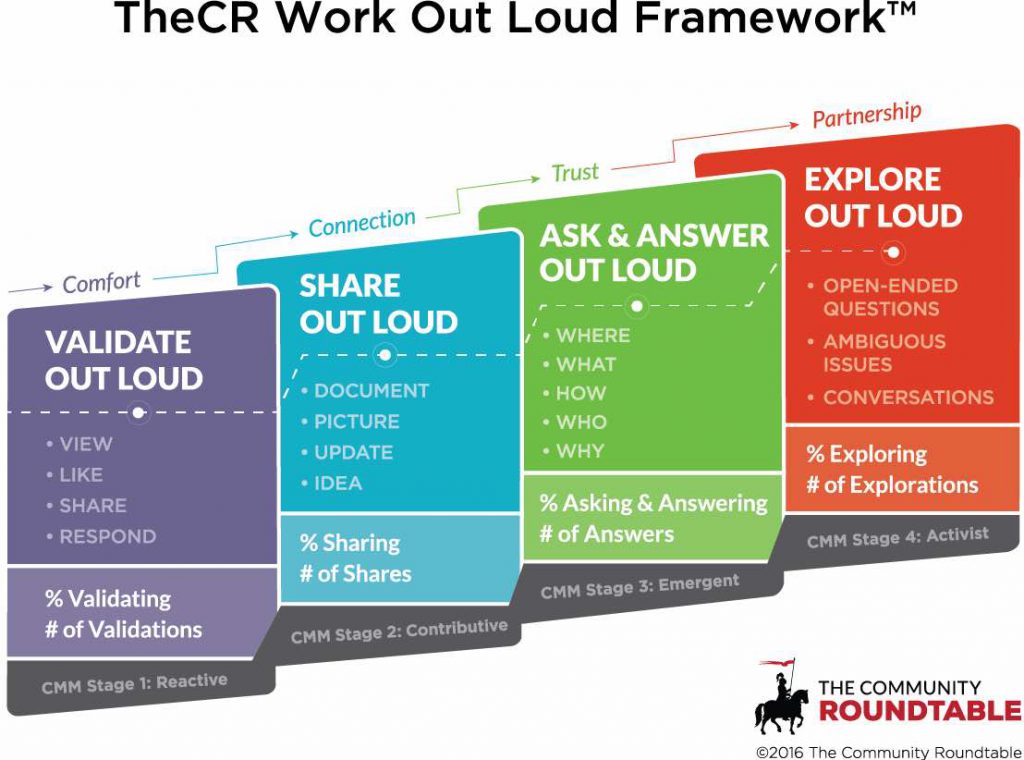We’re now mid-way through the first year of the AAAS Community Engagement Fellows Program (CEFP), funded by the Alfred P. Sloan Foundation. The first cohort of Fellows is made up of 19 scientific community managers working with a diverse range of scientific communities. As they continue to develop their community engagement skills and apply some of the ideas and strategies from their training, the Fellows will report back on the blog, sharing their challenges, discoveries, and insights. Today, Fellow Rosanna Volchok recaps the latest in a series of training webinars for the CEFP cohort.
Posted by Rosanna Volchok, Network Engagement Manager at The New York Academy of Sciences

CEFP Fellow Stephanie O’Donnell’s recent blog series recapped The Community Roundtable’s introduction of the “Community Playbook” as a valuable tool for community managers. This three-part series broke down 1) the core concepts of a Community Playbook; 2) how different audiences might make use of one; and 3) the different kinds of content and content mediums a community engagement manager might include in one.
Today, I’ll take us through Rachel Happe and Georgina Cannie’s Community Roundtable presentation on understanding how a community engagement manager might document strategy within a community playbook. This includes defining a community’s shared purpose and shared value, connecting these inputs and outputs to key community member behaviors, and putting it all together to create a strategy statement that will inform the community engagement work going forward.
.
Defining Shared Purpose and Shared Value
Because communities are inherently communal spaces, it is important to remember that the most successful communities work best when they work for everyone. Does this mean that disagreements within a community won’t occur? Of course not. But it does mean that a successful community should be built with both member and organizational objectives considered. Finding the overlap–the sweet spot–between member objectives and organizational objectives is where the community’s shared purpose and shared value can come to light:
Shared Purpose: Shared purpose can be understood as the community’s input. The CEFP cohort was asked to identify each of our own community’s shared purpose by answering the question of “what is the problem/shared purpose that will bring the community together?”
Shared Value: Shared value can be understood as the community’s output. The CEFP cohort was asked to identify each of our own community’s shared value by answering the question of “what is the shared value that can only be delivered by collaborating [within your community].”
Defining shared purpose and shared value is critical to a community’s sustainability, however, the CEFP cohort soon learned that crafting a shared purpose/value statement is no easy task. When done effectively, the statement will trigger excitement and interest because it will provide compelling justification for the community’s existence and how participating in community activities will address a shared problem.
Identifying Key Behaviors
Changing member behavior to use the community instead of other channels is the very thing that generates shared value. Because of this, it is important to identify the key member behaviors that will promote a community’s objectives when performed within the community. Channeling actions into behaviors that will happen inside the community will create value for both the organization and the community members themselves.
But how do we, as community engagement managers, know which behaviors to identify in the first place? The Community Roundtable advises that key behaviors should be chosen for one’s community based on the level of engagement your community displays. Broadly, community behaviors tend to fit into four categories of community engagement:
1) Validation, e.g., viewing, liking, or following a community post
2) Sharing, e.g., commenting on or sharing community posts; sharing photos or documents with the community
3) Asking & Answering, e.g., asking and answering community questions; knowing where to go for information
4) Exploring, e.g., engaging in discussions and conversations; asking open-ended questions
While community members will typically be distributed across this spectrum of engagement, it’s best to craft strategy based on where the majority falls. Note that it’s also not necessarily expected that every community will reach the exploring stage – you might achieve your shared value at a different stage in the engagement spectrum.
We were encouraged to practice linking our shared purpose/value statements to key behaviors by filling out the following outline with different user personas. Let’s say, for example, we were working with a community with the following shared purpose and shared value statements:
Shared Purpose: The community connects us to each other so we can succeed together.
Shared Value: The community allows us to grow and learn together as a community, making our work easier, transparent and more meaningful so we all benefit
From here, we can then craft user personas for a given behavior relevant to our community:
– I am an industry scientist [user persona].
– I need community to bounce ideas off of my peers [use case].
– I need this when I get stuck on a project and want feedback [trigger].
– I succeed by asking questions [behavior].
– I feel good by receiving honest, relevant feedback [reward].
– This can be measured by looking at # questions; # answers [metric].
Creating a Strategy & Roadmap
Once you’ve crafted a community’s shared purpose and shared value statements, and have connected these to key community behaviors, you have the makings of a statement of strategy! This statement should be concise, relatable and understandable so that people can absorb it quickly and repeat it back.
For the community mentioned above, a statement of strategy might read as follows: “Our shared purpose is to connect with each other so we can succeed together. We deliver shared value by growing and learning together as a community through information sharing, asking questions, and helping one another find solutions to make our work easier, transparent and more meaningful.”
Creating this statement of strategy provides community engagement managers with the direction to navigate through uncharted territory.
This presentation set the scene for the Community Engagement Fellows to begin the work on our own community playbooks at the CEFP mid-year meeting. More to come on playbooks throughout the duration of the program year!
You can catch up on the rest of community playbook series here and find all of the CEFP Fellows’ posts here.
